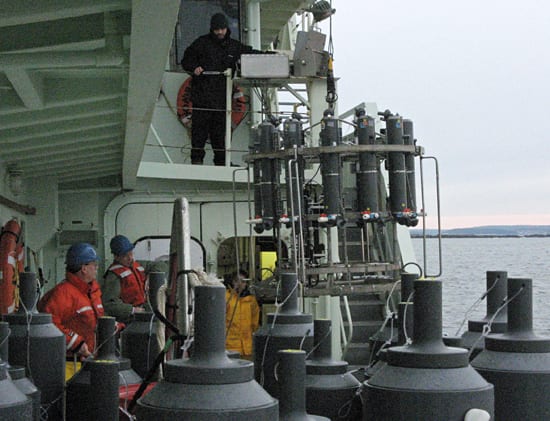Image
Studying Red Tide in the Gulf of Maine
June 21, 2010Researchers Jefferson Turner of UMass Dartmouth, left, foreground, Dennis McGillicuddy of WHOI (green jacket), and winch operator John Gaylord of WHOI, above, deploy a CTD rosette system on R/V Oceanus to measure water properties and collect samples during a voyage studying a harmful algal bloom, or “Red Tide,” in the Gulf of Maine. Researcher Stacy Lee of Northeastern University (yellow jacket) looks on. Toxins from the dinoflagellate Alexandrium fundyense can accumulate in filter-feeding organisms such as mussels and clams, causing illness in humans if the contaminated shellfish are consumed. Fortunately, effective monitoring by state agencies protects human health by closing the affected shellfish beds to harvest. Research by this group, under the auspices of NOAA and the NSF/NIEHS Woods Hole Center for Oceans and Human Health, is leading to a better understanding of the toxic blooms, providing valuable information for management and mitigation of this problem.
(Photo by Alexander Dorsk, Woods Hole Oceanographic Institution)
Image and Visual Licensing
WHOI copyright digital assets (stills and video) contained on this website can be licensed for non-commercial use upon request and approval. Please contact WHOI Digital Assets at images@whoi.edu or (508) 289-2647.

